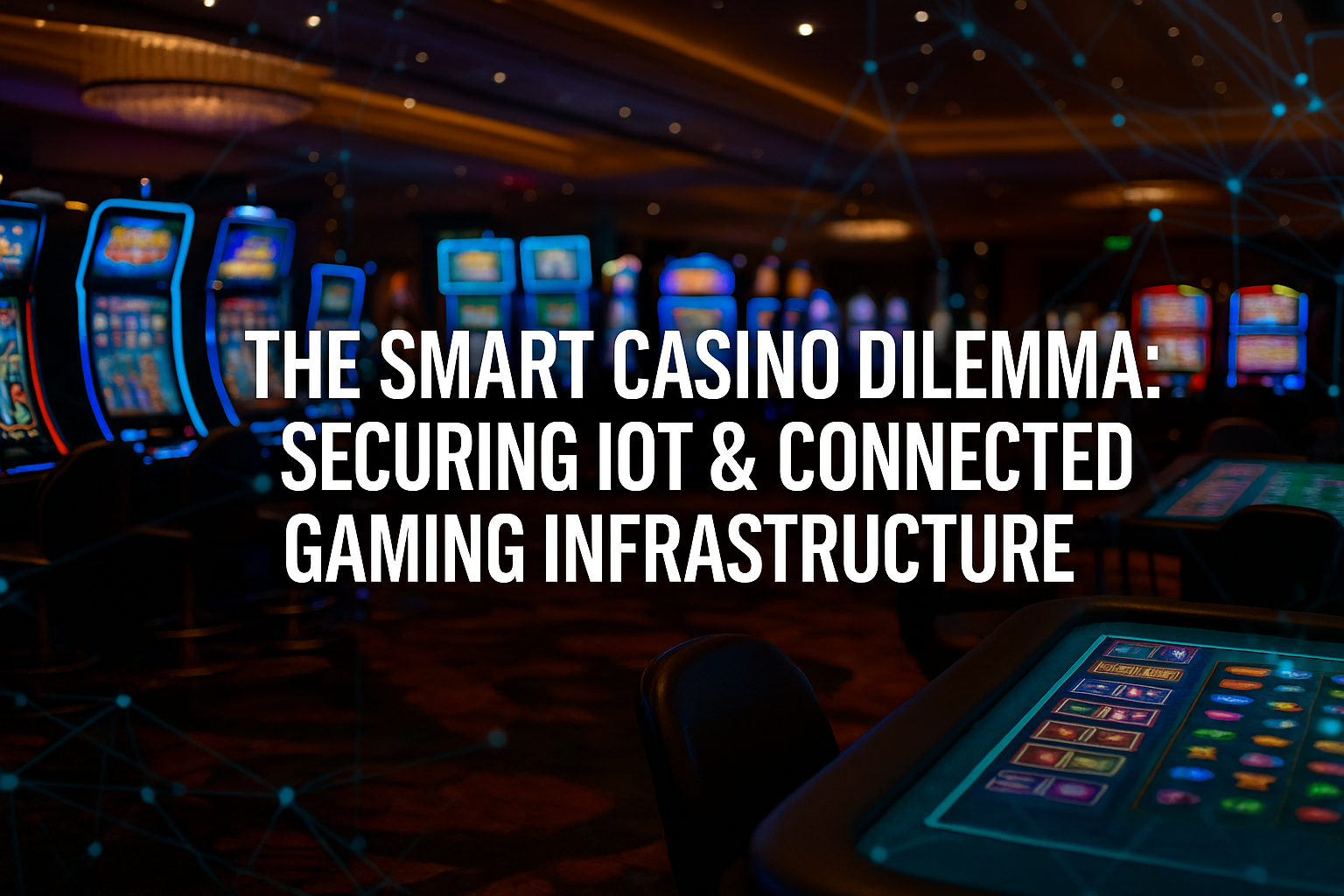Casinos across the U.S. are becoming smarter—integrating AI, IoT, and connected systems to create immersive guest experiences, streamline operations, and optimize revenue. From RFID-enabled chips to AI-powered surveillance, modern gaming floors are now data ecosystems.
But this evolution brings new challenges: every connected sensor, digital table, and hospitality control system represents an entry point for attackers. As the industry races toward digital transformation, smart casino cybersecurity is fast becoming the highest-stakes game of all.
The Rise of the Smart Casino
Smart casinos use a web of Internet of Things (IoT) devices and smart technologies to merge entertainment, operations, and security. This transformation spans nearly every part of the property:
- Gaming Floors: Smart tables, connected slot machines, digital payout systems, and networked kiosks.
- Hospitality & Operations: IoT-enabled HVAC, lighting, and guest room controls for energy efficiency and personalized service.
- Surveillance & Safety: AI-driven video analytics and biometric access systems integrated with physical security.
- Payments & Loyalty: Contactless payments, digital wallets, and real-time loyalty analytics connected via APIs.
Together, these systems create an interconnected experience—but also a complex, interdependent web that is only as strong as its weakest link.
The IoT Security Problem: Too Many Endpoints, Too Little Oversight
The same innovations that drive operational excellence are now the largest security concern. According to the Cybersecurity & Infrastructure Security Agency (CISA), IoT devices are among the fastest-growing threat surfaces in critical infrastructure sectors, including gaming and hospitality.
Key risks include:
1. Device Proliferation
Casinos may run tens of thousands of IoT endpoints—from slot systems to cameras—each requiring firmware updates, authentication, and patching. Unmanaged devices become prime targets for intrusion or pivot attacks.
2. Network Overlap
Operational technology (OT) and IT networks often share infrastructure. A single unsegmented VLAN can let an attacker jump from a guest Wi-Fi device to critical casino systems.
3. Supply Chain Vulnerability
Many IoT devices are sourced from third-party vendors with inconsistent security standards. If a vendor’s firmware or API is compromised, the impact can ripple through your entire infrastructure.
4. Visibility Gaps
Traditional IT monitoring tools often can’t detect or classify IoT devices properly. Unknown devices = unknown risk.
5. Compliance Pressure
Gaming commissions are tightening regulations around cyber resilience and data protection. Operators that can’t prove IoT systems are securely configured and monitored face growing regulatory scrutiny.
Real-World Implications
Recent industry reports show attacks against connected casino infrastructure are rising sharply. Examples include:
- A casino network breach traced to an internet-connected fish tank thermometer, allowing lateral movement into core systems (CISA briefing, 2025).
- Multiple ransomware incidents at tribal casinos where IoT surveillance networks were exploited to lock down property operations.
- Compromised digital signage and hospitality control systems used as footholds for broader intrusions.
Each case reinforces one truth: IoT without governance is an open invitation to attackers.
The Smart Casino Security Blueprint
Building a secure connected environment requires a shift from reactive IT security to proactive, architecture-level defense. Saturn Partners recommends the following strategic approach for operators modernizing their infrastructure:
1. Segment IT, OT, and IoT Networks
- Create strict segmentation between operational systems (gaming, HVAC, IoT) and corporate IT.
- Use Zero Trust principles to authenticate every connection.
- Prevent lateral movement with VLANs, access control lists (ACLs), and micro-segmentation.
2. Asset Discovery & Visibility
- Deploy continuous discovery tools to identify every connected device.
- Maintain a live inventory of device types, firmware versions, and last-seen activity.
- Tag and monitor new devices automatically to prevent shadow IT or rogue IoT.
3. Secure Device Management
- Enforce strong authentication for all devices.
- Disable default credentials and unused services.
- Apply regular firmware and software patching schedules.
4. Vendor Governance
- Require third-party vendors to meet strict security benchmarks (SOC 2, ISO 27001).
- Review and test vendor firmware or software before deployment.
- Limit vendor access and monitor all external network sessions.
5. Continuous Monitoring & Threat Detection
- Integrate IoT telemetry into your Managed Detection & Response (MDR) or vSOC platform.
- Correlate logs across systems to identify anomalies early.
- Use AI-driven analytics to flag unusual device communication patterns.
6. Incident Response & Recovery
- Prepare playbooks for IoT-originating incidents.
- Ensure backups are network-isolated and unaffected by IoT endpoints.
- Regularly test failover procedures that include smart systems.
Looking Ahead: AI, Regulation, and Resilience
As smart casinos evolve, so will attacker sophistication. AI-driven gaming systems, facial recognition, and predictive analytics will add new risk vectors—especially as casinos converge entertainment, security, and data intelligence on unified networks.
Regulators are responding. Expect new compliance requirements around device inventory management, network isolation, and event logging in the coming year. Forward-looking operators will treat these as opportunities to differentiate through resilience, not burdens to avoid.
Conclusion
The casino of the future is smart, connected, and data-driven—but without robust governance, it’s also exposed.
Securing IoT and connected systems requires a holistic strategy that blends visibility, segmentation, vendor oversight, and proactive monitoring. Those who act now will not only avoid breaches but also build trust, operational continuity, and compliance leadership in an increasingly digital gaming landscape.
Contact Saturn Partners to evaluate your connected infrastructure, map IoT risk exposure, and implement scalable MDR and Zero Trust solutions for your casino environment.

